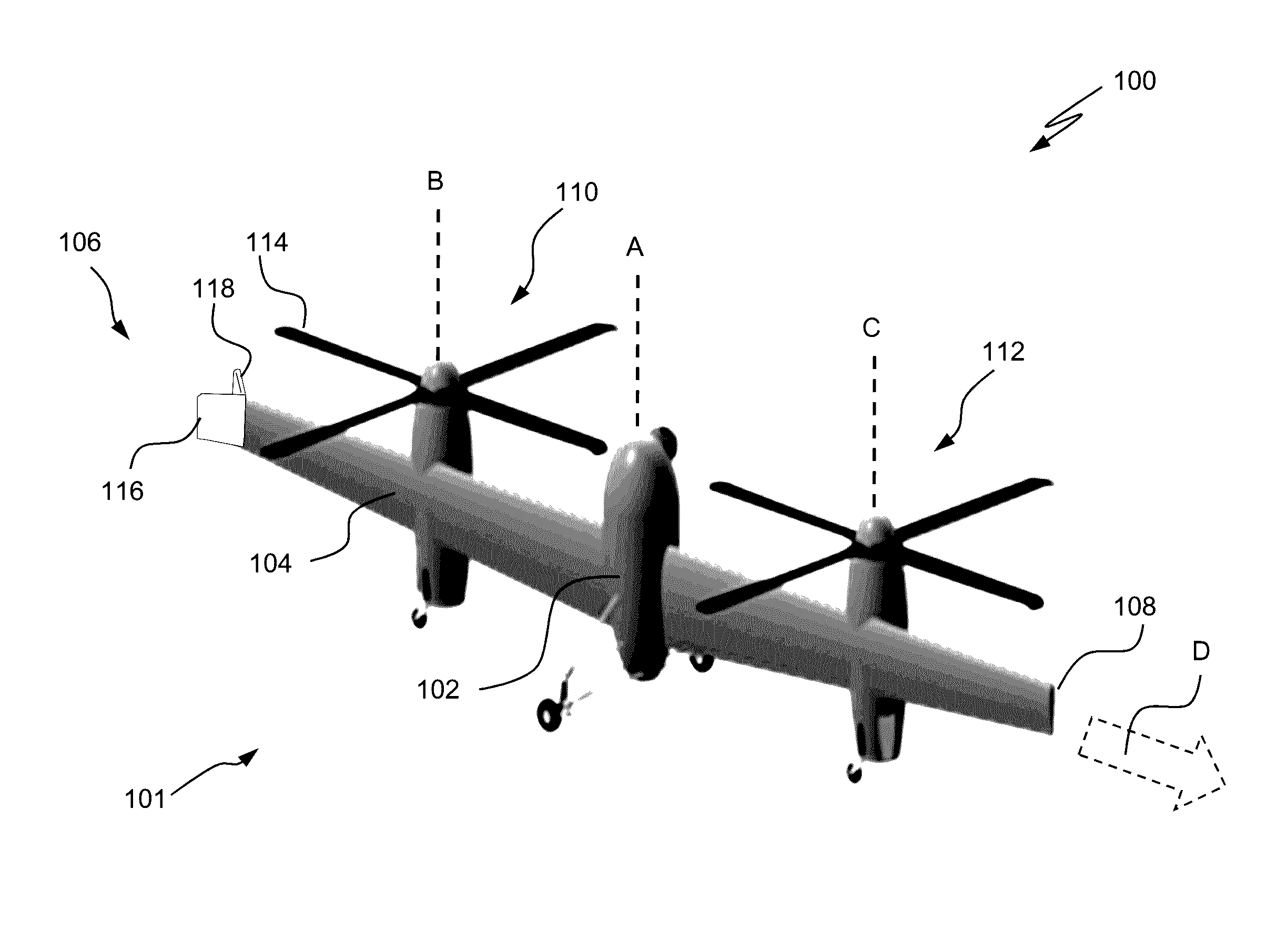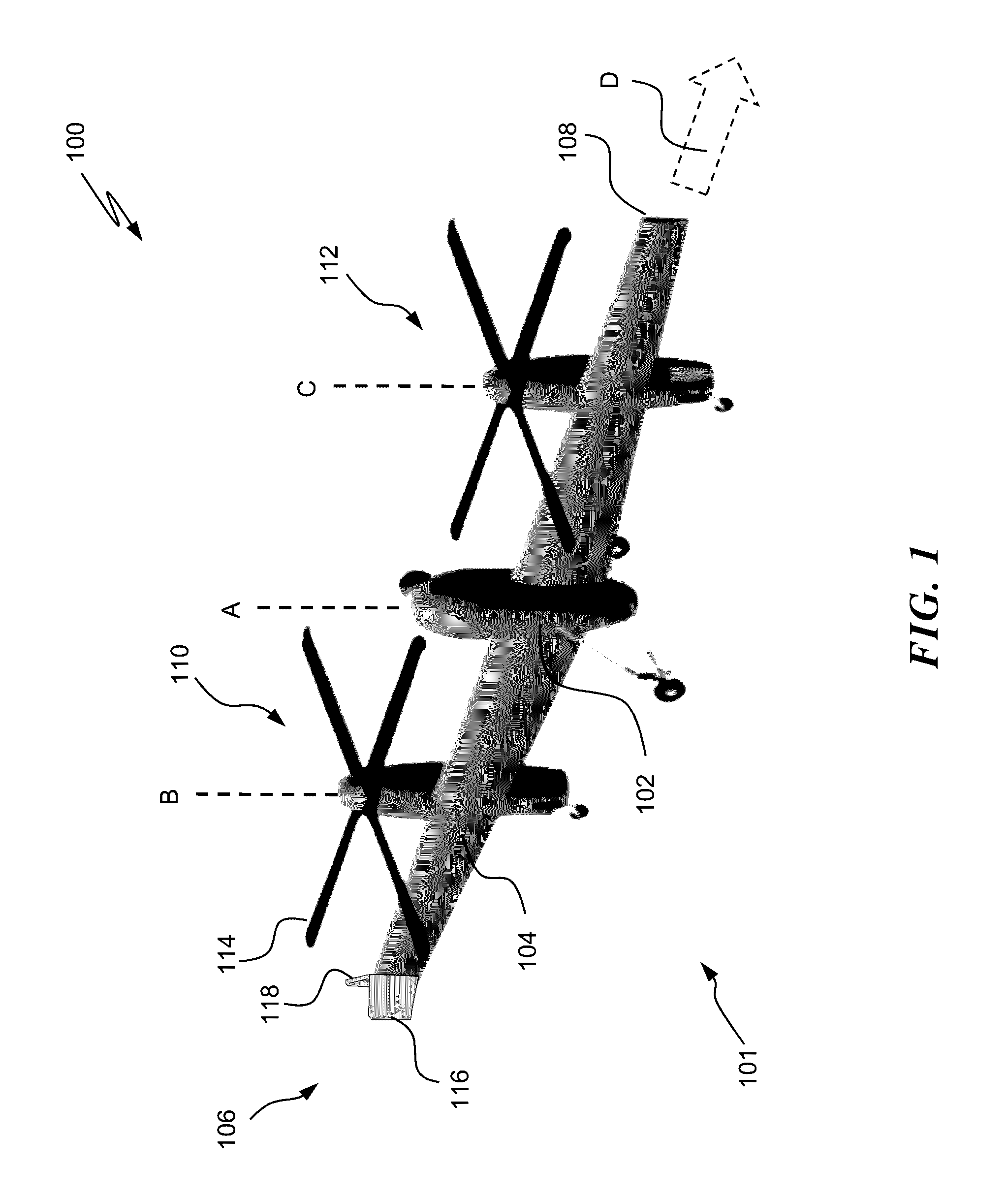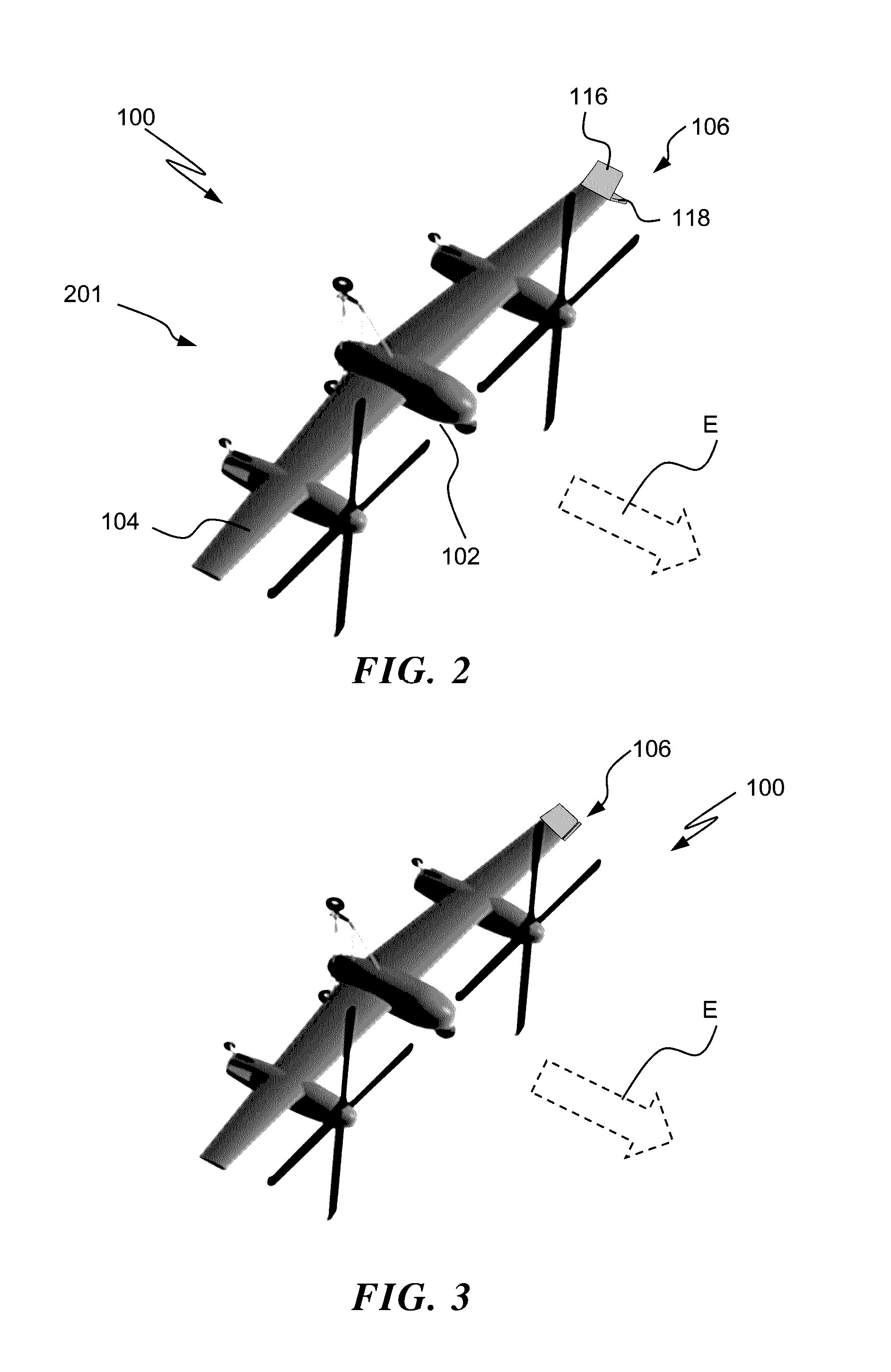Vertical take-off and landing drag rudder
a drag rudder and vertical take-off technology, applied in the field of rotorcraft, can solve the problems of increasing the instability of the directional stability of the aircraft, the size of other vtol aircraft, and the inability to adapt to the size of the aircra
- Summary
- Abstract
- Description
- Claims
- Application Information
AI Technical Summary
Benefits of technology
Problems solved by technology
Method used
Image
Examples
Embodiment Construction
[0028]Referring now to the drawings, FIGS. 1-3 illustrate a perspective of an exemplary vertical take-off and landing (VTOL) vehicle in the form of a proprotor tail-sitter aircraft 100 according to an embodiment of the invention. As illustrated, tail-sitter aircraft 100 includes a fuselage 102, an elongated wing structure 104 attached to fuselage 102, and a drag rudder assembly 106 at one wingtip. Although a particular configuration of a proprotor tail-sitter aircraft 100 is illustrated and described in the disclosed embodiments, it will be appreciated that other VTOL tail-sitter configurations of aircraft that can operate in confined areas on land or on water including fixed-wing aircraft, tiltrotor aircraft, tiltwing aircraft, and other tail-sitting VTOL aircraft including micro air-or organic air-vehicles may also benefit from embodiments disclosed.
[0029]As illustrated in FIG. 1, an exemplary tail-sitter aircraft 100 is shown in tandem rotor flight mode 101 (i.e., rotor-borne fli...
PUM
 Login to View More
Login to View More Abstract
Description
Claims
Application Information
 Login to View More
Login to View More - R&D
- Intellectual Property
- Life Sciences
- Materials
- Tech Scout
- Unparalleled Data Quality
- Higher Quality Content
- 60% Fewer Hallucinations
Browse by: Latest US Patents, China's latest patents, Technical Efficacy Thesaurus, Application Domain, Technology Topic, Popular Technical Reports.
© 2025 PatSnap. All rights reserved.Legal|Privacy policy|Modern Slavery Act Transparency Statement|Sitemap|About US| Contact US: help@patsnap.com



